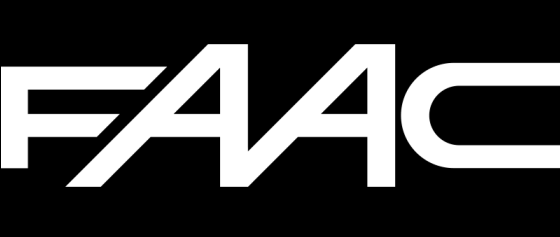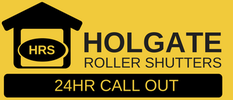Title Page
-
Date Conducted on
-
Authorised Technician
-
Technician ADSA Number
-
Job Number
-
Client
-
Site Name
-
Post Code
Asset Record
Asset Inspection:
-
Asset Location Description
- Entrance - Main
- Exit - Fire
- Exit - Main
- Goods In
- Office
- Warehouse
- Window
- Other
-
Other Location
-
Image - Asset Location
-
Image - Asset Tag [ Please take clear picture ]
-
Approximate Age of Asset
-
Shutter Type
- Manual Push Up
- Tubular Electric (240 v)
- Chain Up
- 3 Phase
- Sectional Door
- Other
- Garage Door
-
Name Other
-
Traffic Type
- Type 1: Controlled area - use by trained persons only
- Type 2: Public area - use by trained persons only
- Type 3: Public area - any persons can use
- N/A - Traffic can not pass through
-
Lath Type
-
Lath Design
- Solid
- Perforated
- Punched
- N/A - Sectional Door
-
End Lock Composition
-
Bottom Rail Type
-
Bottom Rail Accessories
-
Locks
- Pin Locks
- Ground Lock
- Centre Lock
- None
- Other
-
Lock Type
-
Canopy/Facia Design
-
COMPLIANCE: POTENTIAL HAZARDS
-
Structural failure - Supporting fixtures and fixings
-
RSD is installed to suitable structure (Structural steel, brick, block, reinforced concrete shopfront)
-
Please decommission the roller shutter door ASAP for H&S reasons.
-
Structural failure - Shafts, plates, bearings, barrel, guides & travel stops
-
Barrels, bearings and guide tracks are positively aligned and secured to prevent detrimental movement, misalignment and disengagement. Bolts are fitted at the barrel end securing the barrel to the end plates.
-
Please decommission the roller shutter door ASAP for H&S reasons.
-
Fall back - drive
-
Can persons/objects pass under the shutter?
-
Does the shutter have a safety brake?
-
UNSAFE SYSTEM NOTICE:
Requiring Improvement
In accordance with the DHF Code of Practice, the above door is currently not safe for operation.
Continued use of this system may result in damage to property or injury to users or members of the public generally.
All faults or improvements we consider necessary to be rectified before the system can be regarded as safe in operation are listed on the page entitled ‘Fail’ within this service/maintenance record.
You are reminded that, as the system manager, you have a legal duty of care to users and visitors to the premises (including trespassers). If the system is not maintained in safe condition, any party whose property is damaged, or who is injured by the door is likely to be able to sue for damages. If you have insurance covering such risks, your insurance contract is likely to oblige you to disclose material facts to your insurer such as, in this case, the fact that the door is not considered safe.
Depending on location and use, there may well be responsibilities for the system manager under health and safety law. Failure to meet duties imposed by health and safety legislation could result in criminal proceedings.
Due to our own responsibilities under criminal law as a system maintainer, we are unable to leave a system with “safety critical” defects in service.
In this case we have rated as “requiring improvement”, we may leave the system in service at your discretion, this is on the basis that the asset most likely met the required safety standards at the time of install, however does not currently meet the required safety standards and therefore improvements should be budgeted for and a plan created to bring the asset up to current standards.
Where a system with defects requiring improvement is left in service, there may well still be legal liabilities for the system manager in the event of an incident resulting in damage to property or injury. We strongly advise all safety related defects are resolved with immediate effect to protect the interests of both the system manager and users of the system. -
The system has been left as found?
-
SURVEY REQUIRED: Please survey for the installation of a safety brake. Should there be no step off available for this on the existing roller shutter door, please survey for a replacement roller shutter door c/w safety brake.
-
SAFETY IMPROVEMENT REQUIRED: The shutter does not have the required safety brake and therefore this must be installed
-
Electrical - shocks/fire
-
Electrical isolation point in view of the door?
-
Can the isolation point be locked off?
-
SAFETY IMPROVEMENT REQUIRED: the isolation point for the door must be in view of the door or have the capability to be locked off. DSS suggest a switched fused illuminated spur within view of and 1 meter of the door be installed for safety during inspection and repair.
-
Control - faults in safety systems
-
Is the location for the activation control a fixed location?
-
Are the activation controls in view of the door?
-
The user MUST always be in view of the door when activating for H&S reasons.
-
Users are aware they must be within view of the door when operating the roller shutter door.
-
User are aware no persons may pass under the door whilst in operation
-
Manual Shutter (No Controls)
-
Crush - closing between ground and 2.5m
-
Operational Devices Installed
- Keyswitch (Hold to Run)
- Remote Fob ( Hold to Run)
- Push Button (Hold to Run)
- N/A - Manual
-
Accessible for inspection?
-
Condition
-
Comments
-
Checked and working?
-
Image of safety edge
-
Details for replacement
-
Hold to run checked and working
-
Cover plates in tact and no bare wires showing
-
Hold to run checked and working
-
Fob buttons can be covered to prevent accidental activation
-
All button cover plates are present and there are no bare wires
-
Emergency stop button tested and working
-
Image of button to be replaced
-
RECOMMENDATION: Safety device to be installed to the roller shutter door.
-
Draw-in - at the coil (roll) when coil is less than 2.5m high
- Applicable
- Not applicable (Coil is higher than 2.5m)
-
To prevent drawing in at the shutter coil (roll) is concealed/protected by
-
SURVEY REQUIRED: Please survey for a shutter canopy or fascia.
-
SAFETY IMPROVEMENT REQUIREMENT: As the height of the shutter coil is less than 2.5 meters high and the coil is not concealed, a canopy or fascia should be installed to prevent the potential for drawing in.
-
Image of shutter coil
-
Lifting - people, when hand/foot holds exists
-
Does the shutter have a wicket gate installed
-
BS EN 12453-2017 states: If a pass door (wicket gate) is fitted in a power-operated door (shutter), movement of the power-operated door shall be prevented when: (A) the pass door is not in a safe position, or, (B) stop the door movement if the pass door is no longer in a safe position. The safe position is: fully open position when the wicket gate DOES NOT travel with the door.
-
The door has a safety device preventing the activation of the door when the wicket gate is not in a safe position
-
Comment
-
The door has a safety device which stops the movement of the door should the wicket gate cease to be in a safe position during the movement of the door
-
Comment
-
Are there any other object(s) attached/which protrude from the shutter which could cause a hazard should a person or object come into contact with these object(s) during activation? (example: hook)
-
Image of object
-
Can this object be removed without reducing the security of the door?
-
Image of door following removal of object
-
Please provide details on how hazard can be removed.
-
Imprisonment/Means of Escape
-
Is the door installed over an entrance or an exit of any type?
-
As the roller shutter door is located over an entrance/exit/goods in location, the roller shutter door should be fitted with means of access, securing or escape in the event of a motor/power failure.
-
Is the shutter installed internally externally to the building?
-
Does the shutter have a UPS/battery back up installed?
-
SAFETY & SECURITY RECOMMENDATION: The installation of a UPS is recommended to ensure the shutter can be secured or opened in the event of motor or power failure. A manual wind facility is not usually suitable for an internally installed shutter as the winding eyelet is not accessible externally and therefore access to the building may be prevented.
-
Does the shutter have a manual wind facility?
-
SAFETY & SECURITY RECOMMENDATION: The installation of a manual wind facility is recommended to ensure the shutter can be secured or opened in the event of motor or power failure.
-
The manual wind function has been tested and is working
-
Do the site have a winding handle?
-
SAFETY & SECURITY RECOMMENDATION: A winding handle should be issued to site
-
A winding handle has been issued to site during this visit
-
Image of issue winding handle
-
Security - Locks
- Applicable
- Not Applicable (No Locks Installed)
-
All locks present
-
Details of locks required for replacement
-
Image of locks required for replacement
-
All locks tested and working
-
Details of locks required for replacement
-
Image of locks required for replacement
-
ASSET IMAGES
-
General Comments
PUWER
PUWER Regulation 4: Suitability of work equipment
-
Is the equipment suitable for the purpose for which it is used or provided?
-
Please explain why the equipment is not suitable?
PUWER Regulation 5: Maintenance
-
Is the equipment maintained in an efficient state; in efficient working order and in good repair?
-
Engineer Recommendations:
-
Where the equipment has a maintenance log, has it been kept up to date?
PUWER Regulation 6: Inspection
-
Is the equipment inspected regularly and are records kept of these inspections?
PUWER Regulation 7: Specific Risks
-
Equipment Operation: Does the equipment or parts of the equipment pose specific risks which mean that it's operation needs to be restricted to suitably trained persons?
-
Can those operating the equipment evidence they are competent to do so?
-
Equipment Maintenance: Does the equipment or parts of the equipment pose specific risks which mean that it's maintenance needs to be restricted to suitably trained persons?
-
Maintenance must always be carried out by the contracted and competent contractor.
-
Is this equipment/machine or parts of the equipment/machine guarded/provide prevention of use/access by untrained persons? (example: access coded)
PUWER Regulation 8: Information
-
Do all persons who use the equipment have access to the equipment's user manual?
PUWER Regulation 9: Training
-
Has a responsible person on site been shown how to correctly operate the equipment/asset; with all associated risks explained and precautions detailed in order to avoid/minimise these risks?
PUWER Regulation 10: Conformity with EU Directives
-
Does the asset/equipment have a CE Mark?
PUWER Regulation 11: Dangerous parts of machinery
-
Are there any unguarded hazards?
-
Please identify the unguarded hazards and preventative actions required?
-
Image of the hazard
PUWER Regulation 12: Protection against specified hazards
-
Is the design of the equipment fit for purpose (consider domestic/commercial/industrial use)
-
Please explain why the design is not fit for purpose?
PUWER Regulation 14: Controls for starting and making a significant change in operating conditions
-
Do the controls for starting the equipment, controlling speed, pressure or other operating conditions require a deliberate action? (Example: to modify the setup/change the parameters of an auto door, or the limits to a shutter)
-
Comment
PUWER Regulation 15: Stop controls
-
Is the equipment provided with one or more readily accessible controls which bring the equipment to a safe condition in a safe manner?
-
Is power disconnected to actuators after the equipment comes to a stop?
-
Does the stop command have priority over the start command?
-
Comments
PUWER Regulation 16: Emergency stop controls
-
Emergency stop controls are not required for hand held or hand guided machines or for machines which stop quickly using the stop control
-
Does this equipment require an emergency stop control?
-
Does this equipment have one or more emergency stop controls?
-
Please describe all remedial action required?
-
Please contact the office for approval to decommission the asset
PUWER Regulation 17: Controls
-
Are all controls clearly visible and identifiable?
-
Are the controls in a danger zone?
-
Image of controls
-
Recommendation for re-location of controls
-
Are the controls positioned where it is possible to see if anyone is in the danger zone? (Example: under a shutter when it is being lowered)
-
Is there a safe system of work in place to prevent any persons being in the danger zone when the equipment is being operated
-
Comments
PUWER Regulation 19: Isolation from sources of energy
-
Can the fused spur be isolated/fuse removed before the engineer starts any works on the asset?
-
Comments:
PUWER Regulation 20: Stability
-
Is the work equipment sufficiently stabilised? (example: shutter guide stability)
-
Please provide any recommendations to sufficiently stabilise the equipment
-
Please provide photographic evidence of stability risk
PUWER Regulation 21: Lighting
-
Has suitable and sufficient lighting been provided to safely use and maintain the equipment?
-
Recommendations
PUWER Regulation 22: Maintenance operations
-
Can maintenance operations be carried out whilst the equipment is shut down?
-
Can maintenance operations be carried out without exposing the person carrying them out to risk?
-
Can maintenance operations which involve risk be carried out safely if appropriate measures are taken to protect the person carrying out the work?
-
Please identify the control measures required to safely carry out maintenance on the equipment
-
DO NOT PROCEED WITH MAINTENANCE
-
Recommendations to improve safety to allow for maintenance operations
PUWER Regulation 23: Markings
-
Is the equipment marked in a clearly visible manner with any markings appropriate for reasons of health and safety?
-
Comments
PUWER Regulation 24: Warnings
-
Does the equipment incorporate any warnings or warning devices which are appropriate for reasons of health and safety?
-
Are the warnings given by warning devices unambiguous, easily perceived and easily understood?
-
Are warnings or warning devices required?
-
Please describe the warnings/warning devices required?
Client Declaration
-
I have been advised of the risks associated with this asset(s).
I am aware this asset(s) must be serviced at least annually by approved and competent persons only.
I am aware only trained approved persons are advised to operate the asset(s).
I am aware those operating the asset(s) must be in view of the asset when operating.
I am aware no persons or objects must pass under the asset(s) during operation.
The attending engineer has advised me of any safety or compliance failures, where the engineer has recommended the asset(s) are not used I understand to do so is at my own risk. -
Client Signature
-
Engineer








